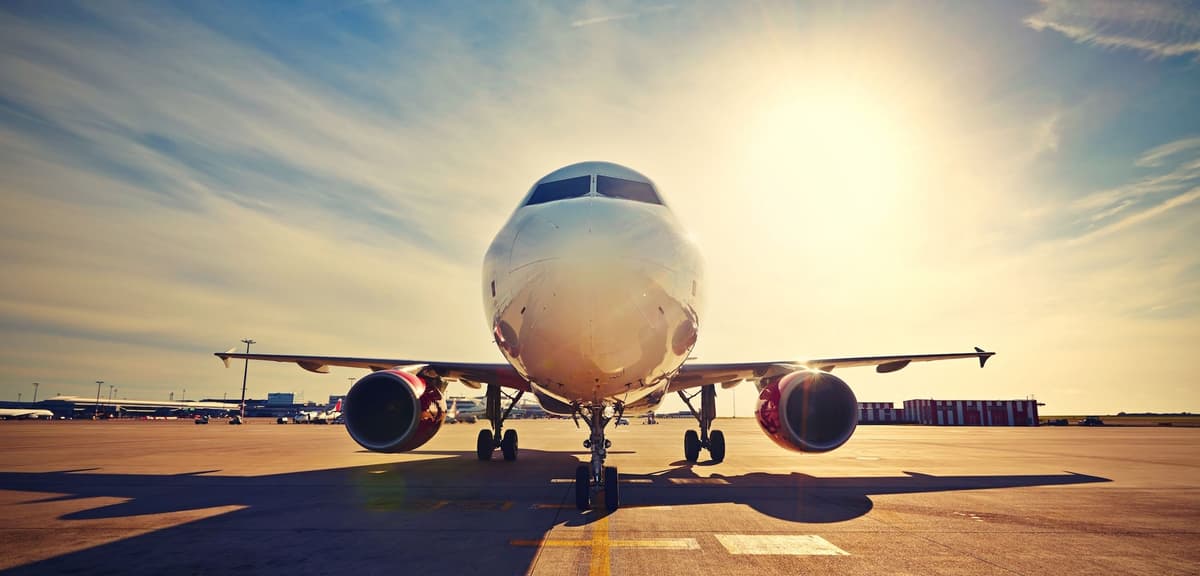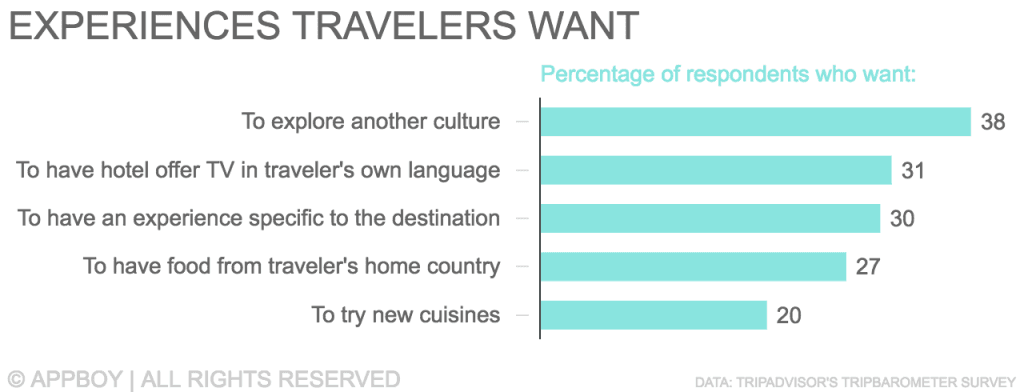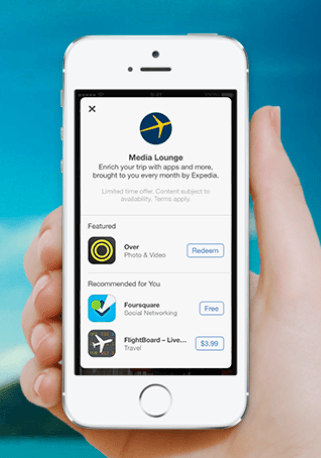The Big Missed Opportunity for Travel Apps: Consistent Engagement Between Bookings
Published on March 16, 2016/Last edited on March 16, 2016/8 min read


Team Braze
A few months ago, the Powerball jackpot hit record numbers. At the time of the winning drawing, the jackpot was over $1.5 billion! People rushed to their local convenience stores to buy a ticket and the chance to daydream about what they’d do with their winnings. Presented with the opportunity for a financial windfall, one common dream among many Americans is the opportunity to travel, just like this lottery winner, who spent five years traveling the world.
Travel is a luxury. It’s not something you do on a daily basis, like buy a cup of coffee. It’s a special occasion that could occur as little as once a year (if at all). Since the frequency of travel is relatively low, how can travel brands engage with customers in between the few times they need a travel app or website?
Airlines and hotels have long used customer loyalty programs to keep travelers coming back. Frequent flier miles and complimentary upgrades are popular tactics for airlines while hotels offer points for each purchase to be used for a future booking. Both have partnerships with credit card companies that keep customers racking up points, even when they’re not looking to book. But today’s new breed of travel booking agencies and apps don’t have these opportunities.
Travel apps like Hipmunk, Kayak, and HotelTonight aggregate offers across multiple airlines and hotel brands. AirBnb, Flipkey, and other sharing economy sites offer hotel alternatives for travelers. All of these sites and apps are more focused on providing you with the best search and purchase experience than a deal from a particular airline or hotel. So how can these travel and hospitality brands build long-term relationships with customers so when the time is right, they book through their service? The answers will be useful to the large airline and hotel brands, too.
What matters to travel customers?
In order to build a long-term relationship with customers, travel brands first must understand what a traveler wants. Take a look at any online travel agency’s site messaging, and it’s obvious there’s a great deal of focus on low prices. Price is undeniably important when it comes to travel, but it’s not necessarily the most important thing for all travelers, each time they book. According to Boxever, 33% of travelers prefer relevance in their search results over lowest price.
Relevance is a combination of price, timing, duration, and personal preferences. Boxever’s survey revealed that 85% of travelers want travel sites to remember their preferences and present them the relevant choices first.
TripAdvisor surveyed more than 40,000 travelers to discover what the “connected traveler” preferred when making travel plans. (The connected traveler being a person who is more likely to plan and book travel on their smartphone.)
The survey discovered that review ratings, word-of-mouth, accommodation amenities, and discounts were the four greatest factors travelers considered when making travel plans.

TripAdvisor also learned that travelers want new experiences; with a taste of home mixed in.

The travel brand that can deliver on these wants is poised to satisfy customers in a big way.
What are travel brands currently doing?
It’s no secret that mobile purchases are beginning to outpace desktop spending. Many travel brands understand the importance of mobile and are optimizing their mobile and app strategy to keep pace with consumer behavior.
Kayak’s CTO Giorgos Zacharia mentions that Kayak sees heavy usage on mobile… at home. Travelers are searching from mobile devices, even with their desktop devices close by. The immediacy of mobile has also increased last minute bookings, one-way flights, short flights, and same-day hotel bookings.
Phil Salcedo, Travelzoo’s Head of Publishing, told me over email, “If you’re only thinking about desktop at this point, you’re really neglecting a significant portion of the audience.”
The Travelzoo team has been using mobile messaging for its Travelzoo Newsflash to alert users of breaking news in travel and entertainment. This allows engaged users to get the latest travel news as it happens and book the hottest deals, before they’re sold out.
Priceline has a feature called “Deals Near Me” which is a location-based feature that showcases hotels in a user’s immediate area.

Expedia’s Media Lounge feature
Expedia has focused its app experience on content rather than commerce to promote user retention. The Media Lounge feature in its iOS app has partnerships with other apps, to enable users to create customer content. For example, Expedia app users can download Over for free, an app that’s usually $1.99 and that allows users to overlay text and graphics on their photos. The connection to documenting travel fun is clear.
Orbitz has put together a team that looks at the mobile journey of travelers. This includes the non-commerce parts of travel, like itinerary lookup, updates, and alerts. “We’re looking at other opportunities to engage with consumers in-trip, starting with ignition around the actual flight experience,” said Chris Brown, group vice president of mobile at Orbitz, Chicago.
It’s clear travel apps are making strides to become more relevant in the fast-paced mobile age. But what else can they be doing to be more engaging?
The missed opportunity: engagement between bookings
I’m a casual traveler; I’ll take about a half a dozen trips a year that need a flight and/or accommodations. I have no incentives (i.e. frequent flier program) to purchase from any particular brand. So when I was analyzing trends in travel apps, I hypothesized what would make me become loyal to specific brands. Here are three tactics travel apps could use to keep users engaged in between trip purchases.
Improved storytelling
Travel has so many storytelling opportunities, both through user generated content and brand publishing. As the TripAdvisor survey found, travelers want to explore other cultures and have unique experiences based on their destination. Travel brands can illustrate these experiences before users make a purchase.
What would win me over: Engage users with fascinating stories and beautiful photos of desired destinations. Wrap a compelling story around a travel deal. Give the user a reason to buy other than price. Don’t just tell me a flight to Hawaii is $289, tell me a story about the beautiful rainforests I could be experiencing. Induce FOMO (fear of missing out) and make users feel like they need to buy the getaway. Storytelling content gives users a reason to open an app or visit a website other than when they need to search or book. In this way, travel apps can take a page from fashion brands and invest in original content and storytelling. Men’s fashion brand Mr. Porter publishes a weekly GQ-like style guide, filled with top-notch content. This weekly content can be accessed directly through the company’s app as well as its website.
Predictive app integrations
According to John Kim, SVP Global Products Expedia, “Expedia’s larger mobile strategy has long been to anticipate and meet the needs of these increasingly mobile travelers by providing them with the best possible user experience on Expedia’s mobile app.”
What would win me over: I would find it really helpful if I could integrate my calendar and Facebook events with a travel app. Instead of having to search out flights and accommodations for a trip I have three months in advance, a travel app could predict my needs. The app could send me push notifications when optimal deals for my particular travel period and destination come up. If an app were to take out a lot of the legwork around planning a trip, they would quickly become my default travel app.
Group planning functionality
When it’s time to actually use a travel app and buy a flight or hotel, it’s often after weeks or months of communication and decision-making.
What would win me over: Every year my college buddies and I go on a “man retreat.” Months prior to the trip, we brainstorm destinations, discuss details, and focus on trip logistics. If an app can add value during this process, it would add a network effect that the travel industry currently lacks. If an app could nudge your friend to remind them their trip input is needed, it reduces the responsibility of just one person being your trip’s catalyst (don’t you hate it when you have to plan everything—or alternately—when everything gets planned without you?). Now when my six friends go to book our flights and accommodations, we could be using the same travel app instead of six different sites.
Price is nice but relevance is king
By the end of 2016, 51.8% of travelers who book trips digitally are expected to book a trip through mobile, rather than desktop. That’s up from 43.8% in 2015. This shift to mobile is a huge opportunity for the travel industry to evolve from a utility proposition to a relationship users want to partake of more consistently. By helping users with travel related problems other than price, travel apps can engage with users between the times they actually make a purchase.
Be Absolutely Engaging.™
Sign up for regular updates from Braze.
Related Content
View the Blog
How AI Decisioning Transforms Marketing (A Complete Guide)

Team Braze

AI decisioning cheat sheet: How to crawl/walk/run with BrazeAI Decisioning Studioᵀᴹ

Team Braze

A day in the life of a data scientist on the BrazeAIᵀᴹ forward-deployed engineering team
